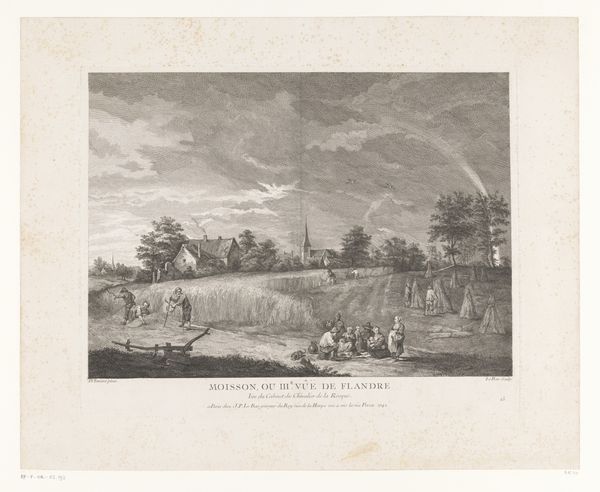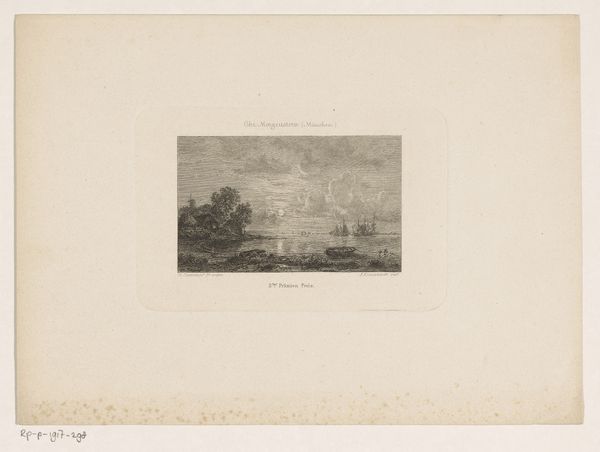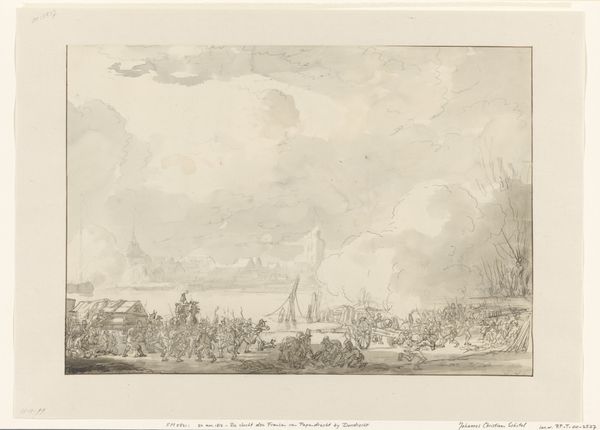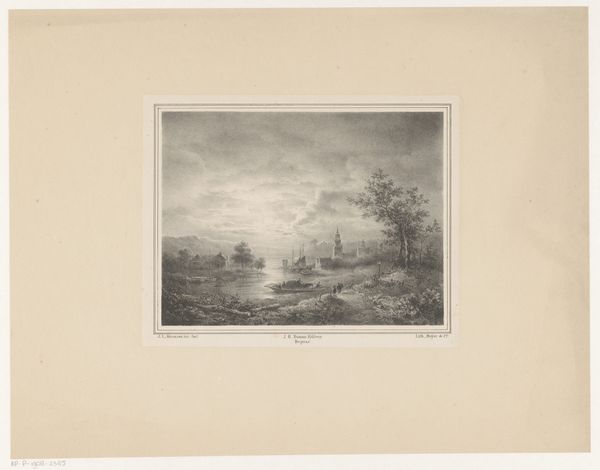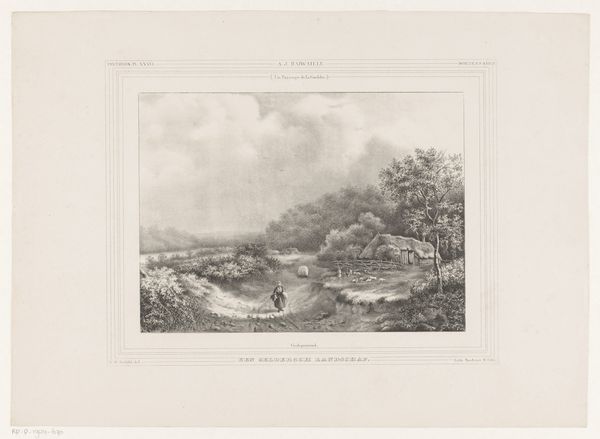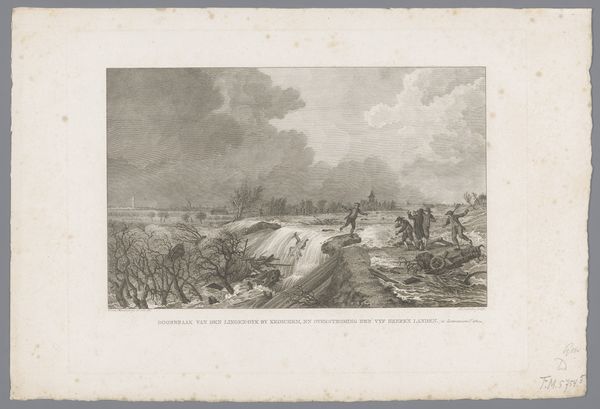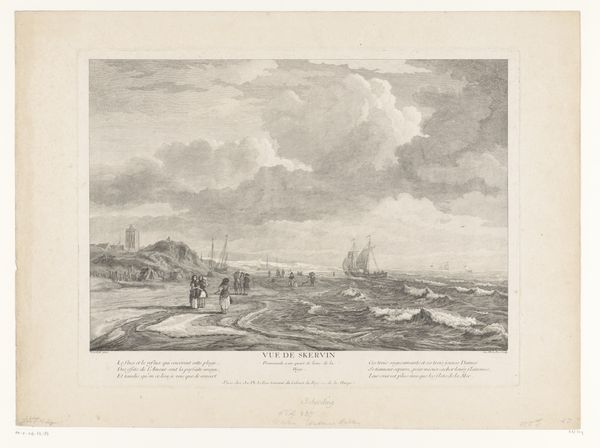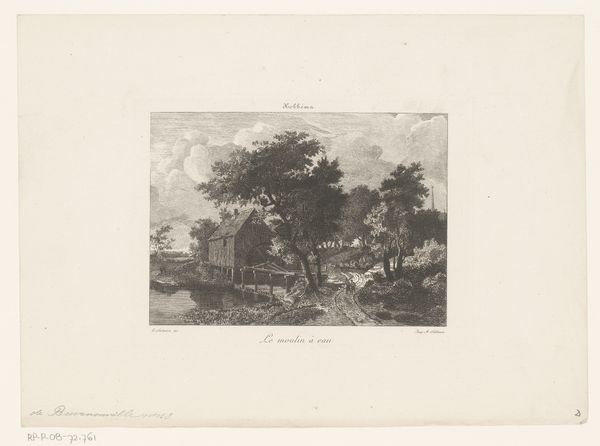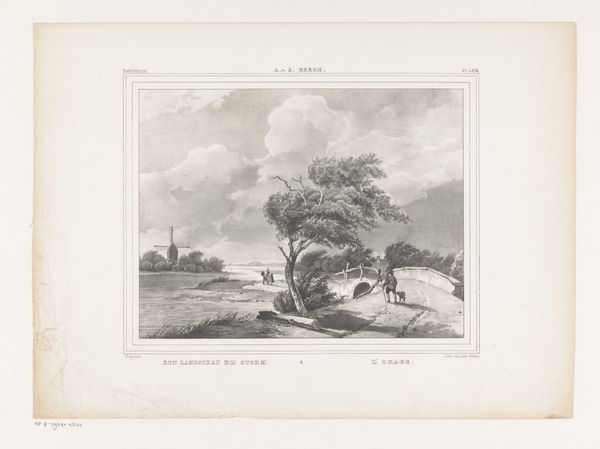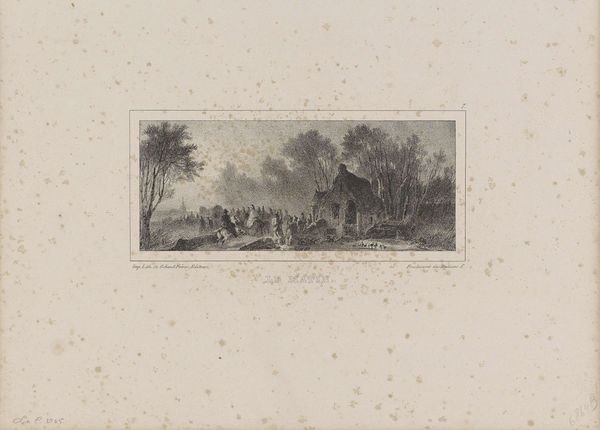
1e Doorbraak tusschen Werkendam en de Werken op den 17 en 18 Jan.ij 1849 / Gezigt v. de Westzijde 1849
0:00
0:00
print, engraving
#
16_19th-century
# print
#
pencil sketch
#
landscape
#
engraving
#
realism
Dimensions: height 246 mm, width 286 mm
Copyright: Rijks Museum: Open Domain
Editor: We’re looking at “1e Doorbraak tusschen Werkendam en de Werken op den 17 en 18 Jan.ij 1849 / Gezigt v. de Westzijde,” an engraving from 1849 by Johannes Beunis. It depicts a flooded landscape, and I immediately notice a feeling of desolation. What do you see in this piece, considering it's a landscape? Curator: What strikes me are the stark, broken trees. They are symbols of disruption, not just of nature, but perhaps also of the social order. Given the date, 1849, a time of revolution and upheaval across Europe, it is hard not to see in the “doorbraak”– the breakthrough, the flooding – a mirroring of political and social turbulence. What kind of narratives do you think this landscape evoke, considering its history? Editor: It feels like a raw, almost photographic capture of a specific historical event, more than just a generalized scene. It feels both precise and vulnerable at once. Curator: Precisely. Consider the choice of engraving. Unlike painting, it allowed for wider dissemination. Images like this informed public perception and served as visual documents of traumatic events. In its lines we might perceive anxieties and aspirations linked to how people remembered moments of crises. Does that connection to specific imagery alter your view? Editor: Absolutely. I hadn't thought about the role of the print in spreading both information and perhaps even shaping public sentiment regarding this event. It transforms the engraving into more than just a landscape; it's a form of historical reporting and collective memory. Curator: Yes, and consider what details stand out. Are people present, active, suffering? Who controlled these images? It makes me think how landscape art served a crucial communicative role, conveying a strong visual rhetoric with symbolic potency in its time. Editor: It’s fascinating to see how symbols and cultural context can reveal such layered meanings in what seems like a straightforward landscape print. Curator: Indeed. It urges us to consider images not just as pretty pictures, but as potent capsules carrying complex cultural memories.
Comments
No comments
Be the first to comment and join the conversation on the ultimate creative platform.

